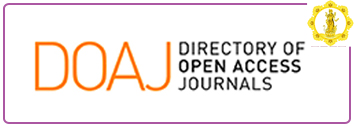Assessment Of Principal’s Instructional Leadership In Selected Public Schools: Basis For Instructional Development Program
Sari
By heart, a principal will remain a classroom teacher. His/Her appointment was not only based on educational qualifications but more importantly on experience and expertise as a classroom teacher. As a teacher rises from the ranks, he/she continues to teach but with lesser teaching loads. Being the principal, he/she primarily the instructional leader of the school despite the more administrative responsibilities on his/her shoulders. Educational leadership experts believed that principals must their role as instructional leader is 70 % and as administrator is 30 %. However, it has been observed that with the demanding administrative work, lesser attention is given to his/her role as an instructional leader. To find out how principals fulfill their role as instructional leaders, this study assessed the instructional leadership of principals in selected public schools in Metro Manila, Philippines. There were 150 elementary teachers who participated in the study. Using the contextualized Principal Instructional Management Rating Scale (PIMRS) by Hallinger (1982), it found out that the principals are fulfilling their roles as instructional leaders in terms of communicating the department’s development plans, promoting professional development, supervising and evaluating instruction, and providing incentives for teachers. However, they need to enhance their instructional leadership roles in three areas namely maintaining high visibility, monitoring student progress, and framing the department’s development plan.
Kata Kunci
Teks Lengkap:
PDFReferensi
A Reviewer for the National Qualifying Examination for School Heads: 2nd edition (2015). Manila: Philippine Normal University.
Bago, Adelaida L. (2008). Supervision of Instruction: The Philippine Perspective. Quezon City:
De La Salle University Press.
Bilbao, P. et al. (2008). Curriculum Development. Quezon City: LORIMAR Publishing Co.
Collins, J. (2001). Good to Great. New York: HarperCollines Publishers, Inc.
Department of Education Order 32, s. 2010 - National Adoption and Implementation of the
National Competency-Based Standards for School Heads.. http://www.deped.gov.ph/orders/do-32-s-2010
Le Fevre, D. M., & Robinson, V. M. (2015). The interpersonal challenges of instructional leadership: Principals’ effectiveness in conversations about performance issues. Educational Administration Quarterly, 51(1), 58-95.
http://eaq.sagepub.com/content/51/1/58.full.pdf+html
Salva, R.V. (2011). Human Relations and Instructional Leadership Behavior of the Subject Area
Coordinators of the High School department in a Private Sectarian University. Unpublished Master’s Thesis. Philippine Normal University-Manila.
Sebastian, J. and Allensworth, E. (2012). “The Influence of Principal Leadership on Classroom
Instruction and Student Learning: A Study of Mediated Pathways to Learning.” Educational Administration Quarterly. pp. 626-623. Retrieved on October 24, 2016, from http://eaq.sagepub.com/content/48/4/626.full.pdf+html
Sergiovanni, T. and Starratt, R. . (2007). Supervision: A Redefinition. 8th edition.
New York: McGraw-Hills Co.
Sevilla, Consuelo G. (1992). Research Methods. Manila: Rex Bookstore.
Timperley, H., S. (2005). “Instructional Leadership Challenges: The Case of Using Student
Achievement Information for Instructional Improvement” . Leadership and Policy in Schools.
www.wallacefoundation.org
DOI: 10.1080/15700760590924591
DOI: https://doi.org/10.25078/jpm.v6i2.1305
Refbacks
- Saat ini tidak ada refbacks.
Jurnal Penjaminan Mutu Terindeks Oleh :









Jurnal Penjaminan Mutu berada dibawah lisensi CC BY-SA




